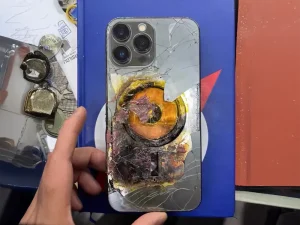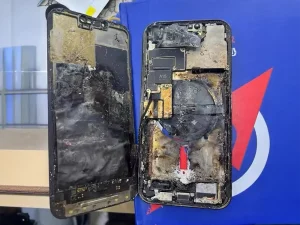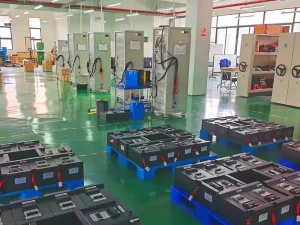Lithium-ion batteries generally offer superior performance for everyday electronics. We use lithium-ion batteries in many ways, from smartphones and laptops to electric cars. They are everywhere. Therefore, lithium-ion battery safety is an important issue we should consider. There is a crucial question about their safety: Do lithium ion batteries explode? If the answer is YES, what can we do to prevent lithium-ion batteries’ explosions? Here are some analyses.
Do Lithium Ion Batteries Explode?
We can search for some news about lithium-ion battery explosions.
-
The 2016 Samsung Galaxy Note 7 “phone bomb” incident is one of the most famous lithium-ion battery explosions worldwide. Numerous users have reported that Note 7 phones have spontaneously caught fire and exploded while charging or in normal use.
-
A large number of power bank recalls occurred in June 2025. Most users discover their power banks spontaneously catching fire and exploding. Romoss, ESR, and other brands have recalled many power banks. The Civil Aviation Administration of China also issued an emergency notice. They explicitly prohibit passengers from carrying power banks without 3C logos or recalled models on board.
So, we get the answer to this question. It is YES. However, there is another question. How to prevent lithium-ion batteries from exploding?
Why Do Lithium Ion Batteries Explode?

First, let’s find out what causes lithium-ion batteries to explode before we talk about preventive measures. The explosion or fire of lithium-ion batteries is essentially a chain reaction triggered by “thermal runaway”.
Thermal runaway happens when a battery produces heat faster than it can release it. The gap between heat generation and dissipation leads to a sharp rise in temperature. High temperatures cause uncontrollable exothermic reactions. This can lead to combustion or an explosion.
The following are three significant aspects that lead to lithium-ion battery explosions.
Internal Defects
An internal short circuit is the most direct and dangerous cause.
Dendrite growth is one of the reasons that causes a short circuit. After multiple charge-discharge cycles, metallic lithium may precipitate on the negative electrode surface in the form of dendrites. These dendrites continue to grow and may eventually pierce the separator. It causes the positive and negative electrodes to connect directly, generating enormous heat.
Diaphragm damage is another reason. The diaphragm is a key component that isolates the positive and negative electrodes and prevents short circuits. If the diaphragm has defects or becomes brittle due to aging during long-term use, an internal short circuit will occur. Besides, after external pressure damages the diaphragm, an internal short circuit will occur, too.
External Abuse
External abuse is the most common cause of improper user operation.
-
Mechanical Abuse – Physical Damage. Firstly, the battery is subjected to firm compression. This compression can deform the internal structure and cause the diaphragm to rupture. Secondly, if a sharp object pierces the battery, it will instantly cause a large-area short circuit. Heat will rapidly spread locally, almost inevitably leading to thermal runaway. Long-term, strong vibrations or falls can shift internal electrodes. This may lead to connection loss or slight damage to the diaphragm. These damages pose a safety hazard.
-
Battery abuse – improper charging and discharging. In terms of overcharging, continuing to force charge when the battery is fully charged (100% SOC) is overcharging. Overcharging makes too many lithium ions leave the positive electrode. They then get stuck in the negative electrode. It can generate a lot of heat. If a battery overdischarges and the voltage falls too low, copper dendrites can break through the diaphragm. This can lead to a short circuit. Overcharging harms the battery. It reduces capacity, raises internal resistance, and creates more heat.
-
Thermal Abuse – High Temperature Environments. Exposing the battery to a high-temperature environment will accelerate the rate of all chemical side reactions in the battery. For example, lithium-ion batteries are exposed to the sun in a car or near a fire. But at what temperature do lithium-ion batteries explode? According to analyses, when internal temperatures reach 200°C-300°C, a chain reaction known as thermal runaway is triggered. Then thermal runaway can ultimately lead to fire or explosion.
Design and Manufacturing Factors
-
Manufacturing process defects. The production environment is unclean, introducing dust and impurities. Uneven electrode coating, weak welding, and poor diaphragm alignment can lead to defects.
-
Battery management system failure. The BMS monitors voltage, current, and temperature to prevent overcharging, over-discharging, short circuits, and overheating. If the BMS is poorly designed or malfunctions, it will not be able to effectively protect the battery during abuse, potentially leading to accidents.
-
Electrolyte problem. Traditional liquid electrolytes, primarily composed of organic solvents and lithium salts, are inherently highly flammable. During thermal runaway, the electrolyte is the primary combustion product. Future developments are moving toward safer solid-state or flame-retardant electrolytes.
How to Prevent Lithium-ion Battery Explosions
Avoiding all forms of battery damage is a core principle to prevent lithium-ion battery explosions. We can avoid it from purchase, usage, charge, and storage.

Purchasing Stage
We must pay closer attention to the purchasing stage to eliminate risks at the source.
-
Choosing a regular brand. Buy electronics and batteries from reputable brands with safety certifications (such as CE, UL, and CQC). Don’t buy “three-no” products or second-hand disassembled batteries to save money.
-
Using original accessories. Different devices may have different charging protocols, and mismatched chargers may cause overcharging or unstable voltage. Therefore, we should try our best to use the original charger and data cable.
-
Examining the surfaces of lithium-ion batteries. If a newly purchased or used battery is found to be bulging, deformed, leaking, or rusted, stop using it immediately.
Daily Usage
-
Prevent bumps and punctures. Dropping, squeezing, or having sharp objects pierce the battery will directly cause an internal short circuit and instantly trigger thermal runaway. We should use protective cases for mobile phones, laptops, and other devices. Besides, avoid storing batteries with metal objects such as keys.
-
Avoid excessive bending. For devices such as mobile phones, placing them in your back pocket has potential dangers. When you sit down, it may cause the body to bend, damaging the internal battery.
-
Unauthorized disassembly is strictly prohibited. It is very dangerous for non-professionals to dismantle electronic devices, as they can easily puncture the battery.
Charging Process

-
Avoid overcharging and overdischarging. Do not charge for a long time. Although modern devices have charge management chips, continuing to connect the charger after it is fully charged will accelerate battery aging and increase the risk. So, we are supposed to stop charging when the battery capacity reaches 80%-90%. Do not use automatic shutdown. Over-discharging will seriously damage the battery’s internal structure and may cause an internal short circuit during the next charge.
-
Charge in a suitable environment. Keep away from the high-temperature environment. Exposure to the sun and being charged in a hot, enclosed car interior are prohibited. Do not charge on flammable materials. Avoid charging on soft, flammable surfaces such as beds, sofas, or pillows to prevent poor heat dissipation.
Storage and Maintenance

-
Long-term storage. If your device or battery has been unused for a long time, charge it to approximately 40%-60%. Storing it fully charged or depleted will accelerate battery aging.
-
Store batteries in a cool and dry place. The ideal storage temperature for batteries is between 10°C and 25°C. We should keep lithium-ion batteries away from heat and direct sunlight.
-
Regular inspections. For power banks and spare batteries that are not often used, remove them regularly to check for abnormalities, such as bulging.
Warning Signs
It is essential to notice warning signs. If you notice any of the following battery conditions, stop using it immediately and dispose of it properly.
-
Noticeable swelling or deformation.
-
Unusually warm, even in standby mode.
-
Unusual odor or leakage.
-
Sudden performance degradation (e.g., sudden loss of charge).
What to Do if a Lithium-ion Battery Explodes?
When a lithium-ion battery explodes or catches fire, the situation is extremely dangerous and requires quick and calm action. The first principle is to ensure the safety of life, and property is secondary.
-
Take immediate action. We should stay calm and avoid areas where lithium-ion batteries are exploding. Then, we should immediately call the fire department at 119. Besides, we need to clearly state that it is a “lithium-ion battery fire” so firefighters can bring the appropriate firefighting equipment. Cut off the power if it is safe and possible.
-
If conditions permit, attempt initial firefighting. Firstly, it is important to use a dedicated fire extinguisher. Class D fire extinguishers are experts in metal fires. So it is the best choice. We can also use a large amount of water. Lithium-ion batteries do not explode in water. Water can help cool batteries down.
-
Take post-fire treatments. In some cases, the risk of battery re-ignition is high. Therefore, we should cool the battery with water or other cooling devices until it reaches room temperature. Besides, we need to ensure adequate ventilation after a fire. When cleaning up the scene, everyone is supposed to wear a mask and gloves.
Conclusion
Lithium-ion batteries pose a risk of explosion. But lithium-ion battery technology is highly mature and safe, and the vast majority of accidents stem from improper use or inferior products. As long as we cultivate safety awareness and develop good usage habits, we can fully enjoy the convenience it brings without undue worry. Safety begins with every detail in our hands.
